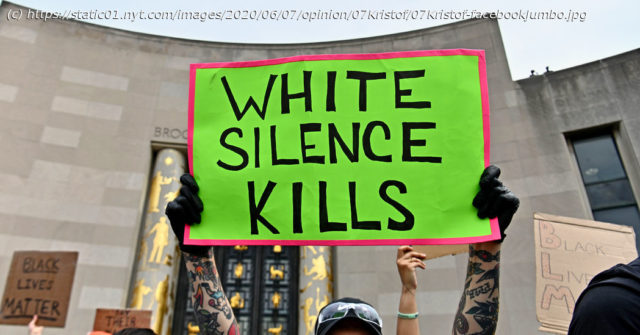Even when racism doesn’t go viral, it’s still deadly.
Imagine that no one had shot video of George Floyd being killed by the police in Minneapolis. There would have been a bland statement that he had died resisting arrest, and none of us would have heard of him.
Instead, the horror of that video has ignited protests around the world. Racism in that video is as visceral as a lynching.
Yet there is no viral video to galvanize us about other racial inequities:
“There is another kind of violence, slower but just as deadly, destructive as the shot or the bomb in the night,” Robert F. Kennedy said in 1968 shortly before his assassination. “This is the violence of institutions; indifference and inaction and slow decay. This is the violence that afflicts the poor, that poisons relations between men because their skin has different colors. This is a slow destruction of a child by hunger, and schools without books and homes without heat.”
Health statistics bear that out. A black newborn in the United States is twice as likely to die in infancy as a white newborn and a black woman is two and a half times as likely to die in pregnancy or childbirth as a white woman.
“Racism is nothing short of a public health crisis,” Michelle A. Williams, the dean of the Harvard School of Public Health, told me. “That reality is palpable not just in the scourge of police violence that disproportionately kills black Americans, but in the vestiges of slavery and segregation that have permeated the social determinants of health.
“Racism has robbed black Americans from benefiting from the advancements they’ve fought for, bled for and died for throughout history.






